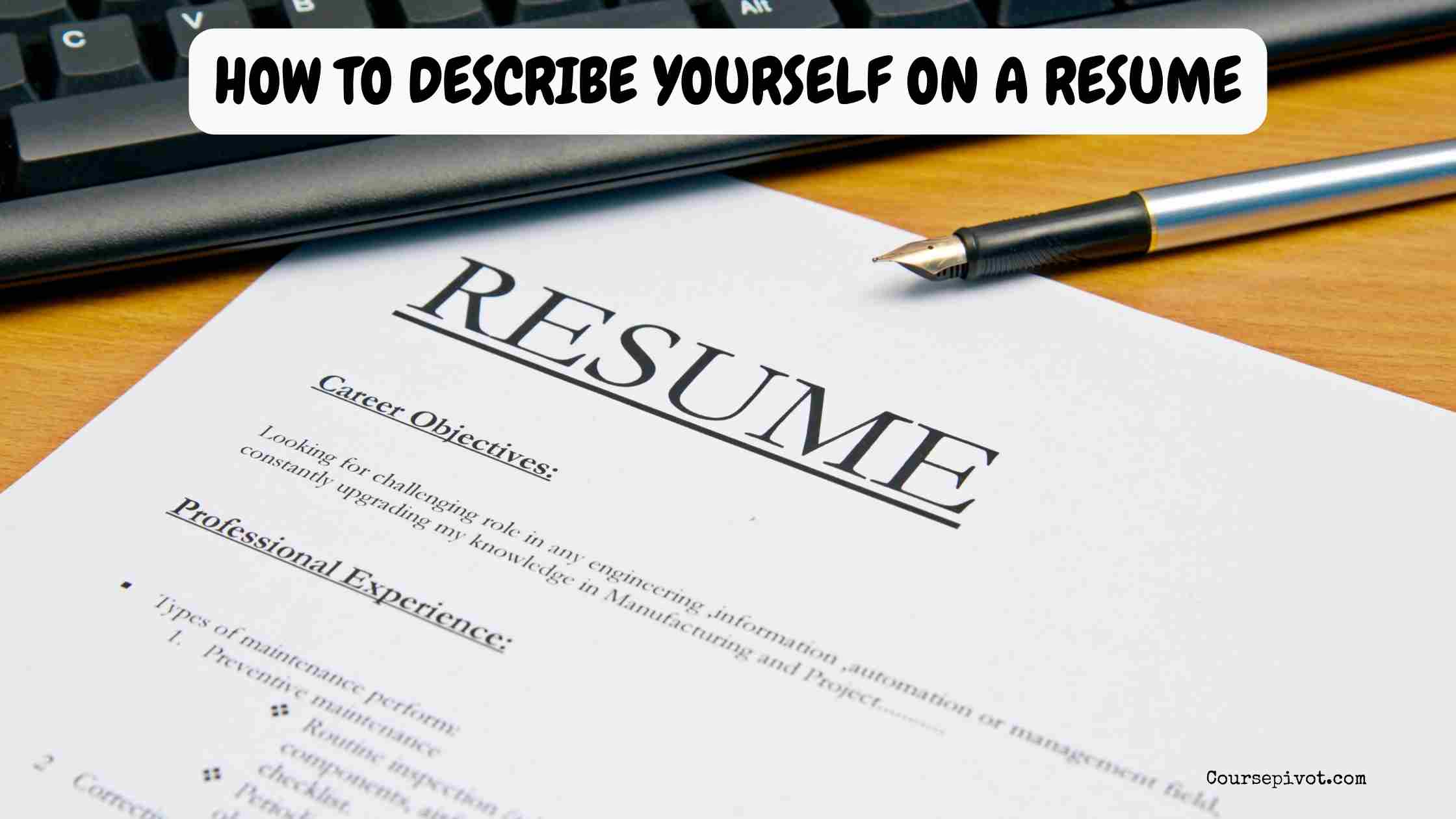
How to Describe Yourself on a Resume
Describing yourself on a resume is one of the most important things you’ll do in your job search. It’s your first impression—your shot to stand out, show confidence, and communicate your value in just a few lines.
But how do you describe yourself in a way that sounds professional, not boastful? Honest, but impressive? Let’s break it down with practical tips, examples, and formatting that can help you get noticed by hiring managers.
Why the Way You Describe Yourself on a Resume Matters
When a recruiter scans your resume, they’re looking for keywords, character, and clarity. The way you describe yourself—whether in a summary, a skills section, or a cover letter—can make a big difference in whether you get called for an interview.
You’re not just listing qualifications. You’re showing who you are as a professional.
Where Do You Describe Yourself on a Resume?
Here are the main areas where you should describe yourself effectively:
🔹 1. Professional Summary or Resume Objective
This is the first section employers read. It’s a 2–4 sentence snapshot of who you are, what you do, and what you bring to the role.
🔹 2. Skills Section
Here, you list your key competencies—both technical and soft skills.
🔹 3. Work Experience
Use powerful, descriptive language to show what you’ve done and how you’ve added value.
Read our blog on How to Write a Resume (8 Important Tips)
How to Describe Yourself Effectively: Tips That Work
✅ 1. Use Strong, Descriptive Adjectives
Pick action-oriented, positive, and job-relevant adjectives that paint a clear picture of who you are.
Some examples include:
- Analytical
- Detail-oriented
- Creative
- Reliable
- Strategic
- Goal-driven
- Collaborative
- Self-motivated
Example: “Detail-oriented marketing specialist with a passion for innovative digital campaigns and data analysis.”
✅ 2. Focus on What You Can Offer the Employer
Don’t just talk about what you want—talk about how you can help the company achieve its goals.
Wrong: “Seeking a role where I can learn and grow.”
Right: “Results-driven sales professional with a proven track record of exceeding targets and increasing client retention.”
✅ 3. Keep It Concise but Powerful
Don’t ramble. A few carefully crafted lines can say more than a paragraph full of fluff.
Use short, impactful phrases that align with the job description.
✅ 4. Match Your Tone to the Role
If you’re applying for a creative role, feel free to show personality. For a technical or corporate job, aim for clarity, precision, and professionalism.
- Read our blog on What Can a Cover Letter Explain That a Résumé Cannot
Examples: Resume Summary Phrases for Different Roles
🔸 Marketing Role
“Creative and data-driven marketing strategist with 4+ years of experience managing high-impact campaigns across social and digital platforms.”
🔸 Customer Service
“Empathetic and solution-focused customer service professional with a reputation for resolving issues quickly and improving client satisfaction.”
🔸 Tech/IT
“Detail-oriented software engineer skilled in Python, Java, and cloud infrastructure. Proven track record of delivering clean, scalable code under tight deadlines.”
🔸 Administration
“Highly organized administrative assistant with strong time management skills and a track record of improving office workflows.”
🔸 Entry-Level Position
“Motivated recent graduate with a strong foundation in project management and a commitment to learning, growth, and delivering results.”
Use Action Verbs When Describing Experience
In your work history, use action verbs to describe what you did and how well you did it.
Some powerful verbs to include:
- Managed
- Led
- Created
- Streamlined
- Implemented
- Resolved
- Designed
- Coordinated
Example: “Implemented a new filing system that improved document retrieval speed by 40%.”
Final Tips for Describing Yourself on a Resume
- Be honest, but confident.
- Tailor your description to each specific job.
- Avoid clichés like “hardworking” or “team player” unless you back them up with specific results.
- Quantify your achievements whenever possible: “Increased sales by 25% in six months.”
Describe Yourself with Intention
When you sit down to describe yourself on a resume, don’t just throw around buzzwords. Be intentional. Be specific. Show that you understand the job—and that you’re ready to excel in it.
You are not just listing what you are—you’re proving why you’re the best fit for the job.
So take your time, craft a statement that feels authentic, and remember:
Your resume is your voice before the interview—make it speak with clarity, confidence, and purpose.



